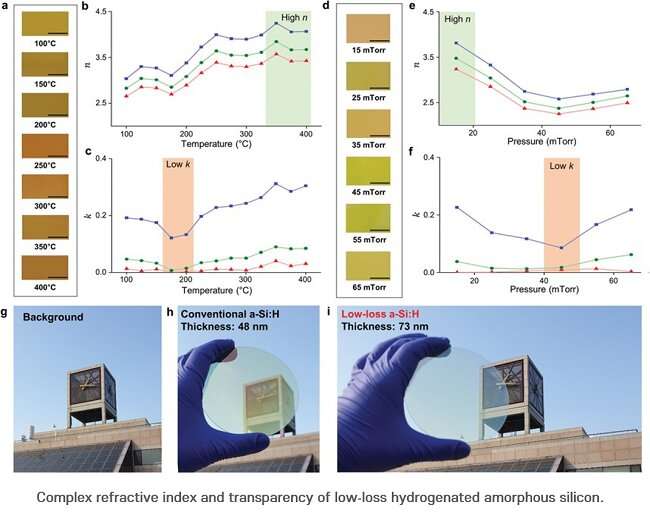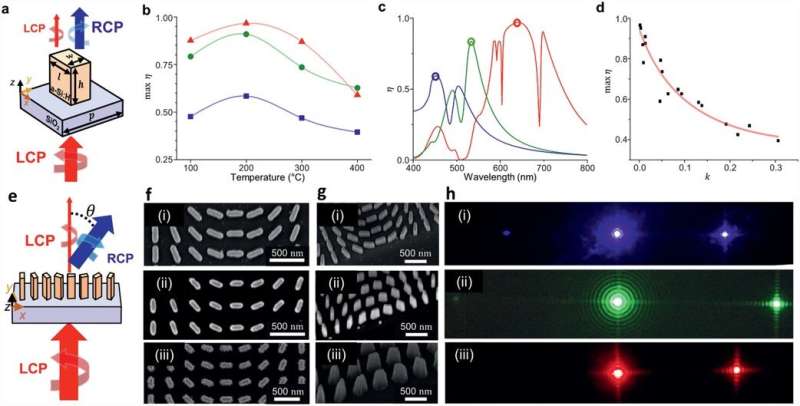Move over heavy goggles, here come the ultra-high refractive index lenses

A POSTECH research team has developed a transparent amorphous silicon that transmits visible light—which permits us to distinguish the colors of objects—enabling the development of paper-thin lenses usable in head-mounted displays (HMD) that show virtual and augmented reality images in real time.
A research team—led by Professor Junsuk Rho of POSTECH's mechanical engineering and chemical engineering departments, and Ph.D. candidate Younghwan Yang and Dr. Gwanho Yoon of the Department of Mechanical Engineering—has developed visibly transparent amorphous silicon by improving the plasma enhanced chemical vapor deposition (PECVD) method, a practice widely used by Korean display manufacturers. The researchers also succeeded in effectively controlling the light in the visible region using the newly developed silicon. This research was recently published in Advanced Materials, the most respected international journal on materials science.
Since light bends more with higher refractive index, a material with high refractive index is essential in designing devices for virtual and augmented reality. However, most highly refractive materials tend to absorb light and when used in a device that produces an image by controlling the light—such as an ultra-thin lens or a hologram—their performance deteriorates. The optical materials presented so far have high transmittance with low refractive index, or, conversely, high refractive index and low transmittance, thereby limiting the production of lightweight and highly efficient optical devices.

To this, the research team utilized the PECVD method, a common technique to develop the amorphous silicon. While depositing the silicon using the PECVD method, the team explored each parameter of the process, such as temperature, pressure, plasma power, and hydrogen ratio, and uncovered the effect of each variable on the intermolecular bonds.
Moreover, the team discovered a method to increase the regularity between silicon atoms by inserting hydrogen atoms between strained silicon atomic bonds, and through this, the atomic structure of amorphous silicon that possesses a high refractive index and significant transmittance was identified. In addition, the researchers succeeded in steering red, green, and blue lights in the desired direction, which could not be controlled with the conventional silicon before.
Transparent amorphous silicon has the advantage of producing hologram devices or ultra-thin lenses that are one thousandth of the thickness of conventional lenses at a fraction of the cost. The applicability of the silicon has also been expanded in that the amorphous silicon, which has been used only in thermal infrared cameras, can now be used as an optical device in the visible light region.
"The discovery of an optical element capable of controlling all visible light has revealed clues about the relationship between the atomic bonding structure and the visible light region, which has not been of interest until now," explained Professor Junsuk Rho, the corresponding author who led the study. "As we can produce optical devices that can control all colors at low cost, we are now one step closer to commercializing virtual and augmented reality and hologram technologies only seen in movies."
More information: Younghwan Yang et al, Revealing Structural Disorder in Hydrogenated Amorphous Silicon for a Low‐Loss Photonic Platform at Visible Frequencies, Advanced Materials (2021). DOI: 10.1002/adma.202005893
Journal information: Advanced Materials
Provided by Pohang University of Science & Technology (POSTECH)





















